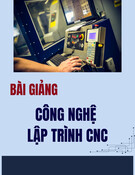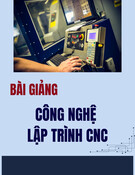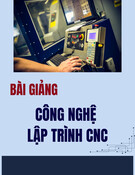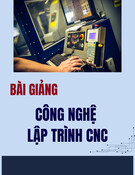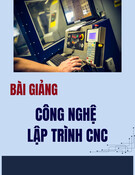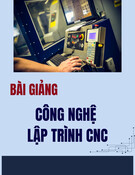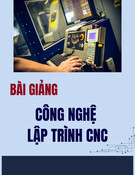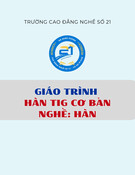
* Corresponding author. Tel.: +57 300 5349187
E-mail address: john.wilmer.escobar@correounivalle.edu.co (J. W. Escobar)
© 2019 by the authors; licensee Growing Science, Canada.
doi: 10.5267/j.dsl.2019.4.002
Decision Science Letters 8 (2019) 519–530
Contents lists available at GrowingScience
Decision Science Letters
homepage: www.GrowingScience.com/dsl
Heuristic constructive algorithm for work-shift scheduling in bus rapid transit systems
César Augusto Marín Morenoa, Luis Miguel Escobar Falcónb, John Willmer Escobarc*, Antonio
Hernando Escobar Zuluagaa and Mauricio Granada Echeverria
aFaculty of Engineering, Universidad Tecnologíca de Pereira, Colombia
bDepartment of Systems Engineering, Universidad Libre Pereira, Colombia
cDepartment of Accounting and Finance, Universidad del Valle, Colombia
C H R O N I C L E A B S T R A C T
Article history:
Received March 12, 2019
Received in revised format:
March 29, 2019
Accepted April 10, 2019
Available online
April 10, 2019
This paper proposes a two-phase heuristic algorithm to solve the crew scheduling problem of the
Megabus Bus Rapid Transit System. In the first stage, a division of the original schedules is
performed using a recursive algorithm based on dynamic scheduling. In the second stage, work-
shift construction based on graph theory is performed using a pairing algorithm (i.e., matching).
The method is validated by applying it to the mass transit system of the Central Western
Metropolitan Area (AMCO), operated by Integra SA, which serves 11 routes for a daily total of
2899 trips.
.Growing Science, Canada2018 by the authors; licensee ©
Keywords:
Crew Scheduling Problem
Heuristic Techniques
Massive Public Transport
1. Introduction
The crew scheduling problem (CSP), or driver scheduling problem (DSP), is part of the operational
planning of public transport systems and refers to the daily tasks assigned to the drivers required to
cover a set of trips assigned to a set of vehicles (i.e., the vehicle scheduling problem (VSP)). That is,
given a set of trips within a fixed period, the problem is to generate the schedule of feasible work shifts,
including start and end times and various types of driver task for a series of trips. The work shifts must
completely cover the operation schedules of all the vehicles to be used (Edmonds, 2965).
The creation of work shifts for the subsequent assignment of drivers is one of the most complex tasks
faced by transport companies and requires a large amount of time to manage. This task is a problem of
substantial interest because the worker payroll represents one of the highest costs in the budget of a
public transport system (Ceder, 2007).
The importance of the CSP to public passenger transport companies motivates the development of new
variants that fit the particular environment of each company. However, regardless of the different
variables that each company confronts, the objective is always the fulfillment of scheduled itineraries

520
and the reduction of human resources-related costs through optimization processes. Extensive review
of the CSP problem could be consulted in Ernst et al. (2004a), Ernst et al. (2004b) and Xie et al. (2015).
In addition real cases application of the CSP could be checked in Ma et al. (2016).
Each itinerary is a description of trips that must be executed within specific time periods and geographic
sections (i.e., routes). The frequency with which an itinerary is operated corresponds to service
conditions and mass transit public service needs as determined by the tactical planning of the entity
that manages the massive public transport system. The combination of route and departure time is
termed a service, and a group of services in the same section is defined as a timetable. The routes of
public transport systems are determined by their strategic planners and typically do not undergo
substantial change in the short or medium term.
Each route must be served by a vehicle with a certain frequency at a defined average speed. That is, a
route must be defined in the tactical planning of a transport system given that all route requirements
are based on the design of the network service (i.e., network route design) and precisely designed to
meet needs identified in strategic planning.
During recent decades, the problem of scheduling driver work shifts has been extensively addressed to
reduce costs, improve the distribution of duties and decrease the number of shifts. Several of the first
studies of this type are presented by Assad (1983), (Alefragis P. G., 1998) and (Alefragis P. S., 2000).
The CSP becomes increasingly difficult to solve as constraints or variables are added to the problem,
even when the constraints or variables requirements are simple (Ibarra-Rojas, 2015).
One study on the DSP was performed in (Fores, 2002). The authors discuss the assignment of drivers
and propose a method that combines overall linear scheduling with a heuristic technique to solve the
problem without requiring prohibitive computing time. The method is successfully applied in planning
scenarios of large-scale public transport systems.
In (Zhao, 2006), a heuristic method termed ZEST for ESTimator is used to analyze the DSP. The author
divides the problem into two time periods (i.e., afternoon and morning) according to each day’s hours
of maximum demand. Each sub-problem is solved separately, and the solutions are only united at the
end of the process to provide a general solution. The described method uses three sequential steps to
examine the structure of a bus schedule created through a manual scheduling process used in the United
Kingdom by expert programmers.
In the doctoral thesis presented in (Weider, 2007), a method is proposed based on an algorithm known
as IS-OPT that integrates the problems of vehicle and driver assignment in passenger public transport
in Germany. The author demonstrates how to replace a linear scheduling (LS) method with an
inaccurate, proximal one in the context of the generation of columns. Through Lagrangian relaxation,
a new set of activities is presented that approximates a large-scale set partitioning problem (SPP).
Finally, a two-phase algorithm to solve the pricing problem is proposed, which is modeled as a shorter
path problem with additional constraints and a nonlinear objective function. The method can solve real
medium-size cases.
In (Steinzen, 2007), the author describes a hybrid evolutionary algorithm with different column
generation methods to evaluate the objective function of each individual. This strategy facilitates
solving an integrated vehicle and driver assignment problem while considering multiple public
transport hubs. The algorithm is based on a decomposition problem that first assigns trips to each hub
and thus resolves an integrated problem for each hub. Each sub-problem can be solved in polynomial
time. This method is capable of resolving problems of medium size.
A method that combines the algorithms of iterative local search, descending variable neighborhood
search and tabu search with adaptive relaxation to solve an integrated vehicle and driver assignment
problem in mass public transport is presented in (Souza, 2010). To investigate the solution space, the

C. A. Marín Moreno et al. / Decision Science Letters 8 (2019)
521
authors propose six movements of relocation and exchange, both for a VSP and a DSP. Tests were
performed with real data from a transport system of a Brazilian city. The results reflect the method’s
effectiveness.
In (Mesquita, 2011) is presented a new mathematical expression to describe a joint vehicle-crew-
rostering problem (VCRP). The authors propose a sequential algorithm that facilitates solving a
nonlinear multi-objective optimization model. The algorithm awards high priority to the objectives
framed within the combined VCRP, while the difficulties presented by the driver rostering problem are
awarded low priority. Within the methodology, the authors develop a heuristic procedure that facilitates
decision-making concerning vehicle, driver and roster scheduling while attempting to comply as
closely as possible with company interests and policies as well as driver preferences. The method is
validated using real data from a bus company in Portugal.
A new mathematical expression to solve the CSP under a set of special constraints according to the
labor and transport laws of Italy is presented in (De Leone, 2011). The proposed model can accurately
solve small and medium-size problems. For real size problems, the authors propose a greedy
randomized adaptive search procedure (GRASP). The method is applied to a set of real problems, and
the results are compared with the current operation of the system under study.
Chen and Niu present in (Chen, 2012) a design of a binary linear scheduling model to solve a DSP
considering various task types, which differ according to the time they are performed. To this end, the
authors divide the duties of each driver by time period (i.e., morning, afternoon and evening) according
to the hours of maximum demand. With this model, the authors seek to minimize the break time of
drivers under a set of complicated constraints that correspond to work regulations. The objective
function has direct implications for operating costs. The model is solved using a tabu search
metaheuristic algorithm with a neighborhood structure that enables the search space to be adequately
investigated.
A flexible and efficient method based on cutting and joining (CAJ) to solve a CSP is presented in (Tóth,
2013). This algorithm enables initial solutions to be quickly generated. Because of the flexibility of the
proposed approach, it is possible to develop an iterative heuristic method with which a more robust
algorithm is obtained to solve the DSP in real instances.
Recent papers dealing with variants of the CSP problem have been proposed by Boyer et al. (2018),
Sargut et al. (2017), Xie et al. (2017), Ma et al. (2017) and Xie & Suhl (2015). The Flexible Vehicle
and Crew Scheduling Problem for urban bust transport are studied by Boyer et al. (2018). A mixed-
integer linear programming model and a variable neighborhood search have been proposed for this
problem showing the efficiency of the proposed approaches by considering a large set of instances.
Sargut et al. (2017) consider a real planning problem for public bus transportation. A multi-objective
set partitioning problem is proposed considering crew rostering and assignment decisions. Xie et al.
(2017) also considers multi-objective crew rostering problem with the weighted sum of all objectives.
Using several methods such as ant colony optimization, simulated annealing, and tabu search methods
solves the problem.
Ma et al. (2017) propose a model considering fairness in the problem of crew scheduling for bus drivers
(CSP-BD). The considered problem is solved by using a hybrid ant-colony optimization approach. Xie
& Suhl (2015) proposed a method for generating a personalized roster for each driver/group of drivers
in a Bus System Transit. The problem is formulated as a multi-commodity network flow problem.
Finally, in this paper, a constructive two-phase heuristic algorithm is proposed. In the first stage, the
division of the shift schedule (i.e., timetable) based on a dynamic scheduling algorithm is performed.
In the second phase, a matching algorithm is implemented (i.e., matching) to construct the work shifts
of drivers at Integra SA, which operates the Megabus system of the Central Western Metropolitan Area

522
(AMCO). The approach consists of minimizing the scheduling time of driver work shifts, maximizing
compliance with labor considerations and ensuring compliance with all constraints. A final result is
presented that is viable in terms of actual operations.
2. Problem description and formulation
The problem of work-shift generation considered here can be formulated in a general way using graph
GV,A, where V0,1,2,…,n,n1 represents the nodes of graph G. Node 0 and node n1
represents the same location, which is where the set of available drivers is to start the various trips
required. In this way, set V1,2,…,n represents the set of tasks or services that must be performed.
Each task must be performed by a driver between start time and final time . The set of arcs
contains all the pairs , such that task ∈ can be performed after task ∈. Each arc has an
associated travel time se and a travel cost , which is the time a driver spends traveling
from where task ends to where task begins.
R0,i,i,…,i,n1 is defined as a path in , which starts at node 0, traverses a set of tasks i∈
V and ends at node 1. Thus, represents the first node visited after leaving node 0, and
represents the last visited node before reaching node 1. Therefore, is a feasible path of ,
which represents a work shift to be worked by a driver. Each path must meet the following
constraints:
(1)
Eq. (1) refers to the real time a driver requires to execute a work timetable, that is, the time that elapses
from the start of the driver’s workday, including the departure of the vehicle from the depot (that is,
from node 0) until the vehicle reaches node 1, where the timetable ends (which is not necessarily
a hub) and whose duration must be less than maximum elapsed time . This is because a driver can
perform part of a shift in the morning and another part in the afternoon or evening. This constraint
avoids shifts that require all the driver’s time and avoids forcing a driver who ends a shift late at night
to wake up early (and vice versa).
∈ (2)
where .
Constraint (2) refers to the maximum work time a driver must perform in a workday.
In contrast, in the literature, different objectives have been considered when solving the CSP, such as
minimizing driver break time, minimizing the number of drivers and maximizing work time. In this
study, we seek to distribute the work time of each driver uniformly. To this end, the difference between
the regulated daily working time and the actual working time of each driver is minimized, as expressed
in the following equation:
||
∈ (3)
Where corresponds to the regulated daily working time and is the actual work time performed by
driver ∈.
The objective function presented in (3) seeks similar working times for all drivers, which ensures that
human resources are used appropriately (i.e., the time worked approaches the regulated working time)
and endeavors to eliminate the driver cost associated with overtime pay.

C. A. Marín Moreno et al. / Decision Science Letters 8 (2019)
523
3. Method
Based on the various service tables of (i.e., timetables) offered by the managing entity (here,
Megabus), the problem consists of determining the set of work shifts that must be performed by the
drivers. The tables assigned by Megabus to the operating company Integra S.A. vary in size (in time
and number of trips) and normally cannot be assigned to a single driver, either because the cumulative
time of all trips exceeds the regulated number of work hours (in terms of the time that a driver may
work continuously and in terms of the regulated daily working time). Therefore, each service table must
be appropriately partitioned such that each partition coincides with the regulations concerning
continuous work and such that the daily shift does not exceed the maximum allowed working time,
for which it is necessary to pair one or more partitions. In Figure 1, the proposed method is described
in a general way. Thus, Figure 1a shows that the process starts with a set of schedules (i.e., timetables),
each of which contains a set of trips or services. Figure 1b illustrates the process of dividing the tables
into sub-tables (i.e., sub-paths in G), which comply with a set of technical working constraints. Finally,
Figure 1c shows the pairing process according to which two or more sub-paths can be joined to form
one path ∈ that represents a task or work shift for a driver.
Fig. 1. Method
3.1 Table division algorithm
Because of the technical and labor constraints included in the optimization process, it is necessary to
perform a division process for each timetable. Because of the number of possible ways to divide the
tables and because there is a set of strict operational constraints, this process is combinatorial:
Fig. 1. The first trip of the work shift generated by the division must start at the depot (node 0).
Fig. 2. The last trip of the work shift generated by the division must end at a hub or the depot (node
1).
Fig. 3. The sum of the times of all trips included in a division must be less than or equal to the
maximum time a driver may work continuously, as expressed in Eq. (4)
∈ (4)
A
C
D
B
0
1
2
3
4
TT
1
TT
2
(a)
5
6
7
8
A
0
1
2
B
3
4
C
5
6
7
D
8
r
1
(b)
0
1
2
A
8
DC
5
6
7
B
3
4
(c)
R
1
R
2
r
2
r
3
r
4

![Tài liệu huấn luyện An toàn lao động ngành Hàn điện, Hàn hơi [chuẩn nhất]](https://cdn.tailieu.vn/images/document/thumbnail/2025/20250925/kimphuong1001/135x160/93631758785751.jpg)

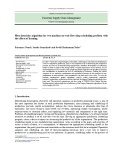
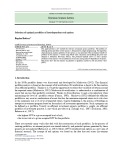
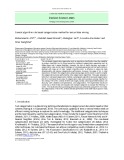
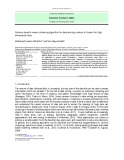
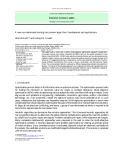
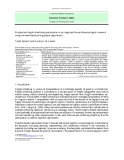
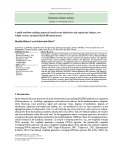


![Bài tập tối ưu trong gia công cắt gọt [kèm lời giải chi tiết]](https://cdn.tailieu.vn/images/document/thumbnail/2025/20251129/dinhd8055/135x160/26351764558606.jpg)




